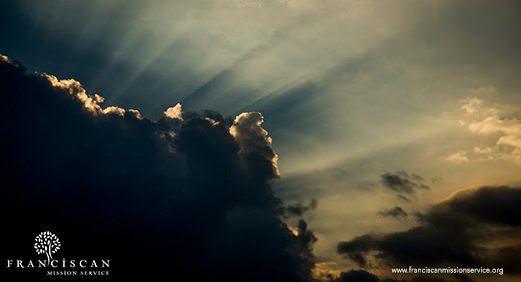A Buzz of Excitement in the Prison

Editor’s Note: Missioner Catherine Sullivan shares her experience of the visit of the Virgen María de Urkupiña statue in one of the prisons in Cochabamba, Bolivia.
A few weeks ago, my morning began the same way it usually does – I walked through the large green metal doors of the women’s prison, said good morning to the familiar female guards, went through the various security measures, and through the doors into the main entrance.
The prison begins in a large concrete courtyard that is usually full of drying laundry hanging from various levels of clotheslines. On the main floor of the courtyard, there are small little stoves plugged into the walls that serve as cafes – providing teas, coffees, and food for low prices- all run by inmates.
On the second and third levels are small concrete rooms which are cells for women who can afford to pay for their own cell (in Bolivia men and women in prison have to pay for their own room and board). On the third floor, there are also a few small classrooms/rec rooms, which is where I spend most of my time with the women.
This particular Friday, however, things were a little bit different than usual. For one, there was a buzz of excitement in the air that was not usually there – a sense of expectation. In the main courtyard, all of the cafe tables had been cleared and the laundry moved to the back to make room for a small table draped with a white cloth bordered with golden thread.
There were framed pictures of the Virgin Mary on the table and in front of the table there were three beautiful bouquets of large red flowers. I was curious, but quickly fell into a conversation with a friend as we walked the three floors up to the classroom together.
Fridays are reflection days where we start with a specific reflection topic (often biblical) that someone brings to the table. This Friday was a particularly long and fruitful discussion about injustices pertaining to women’s rights. The buzz that I had felt upon arriving had clearly followed us all into this room.
After the group discussion had finished, one of my friends, Marta, and I had a very difficult and beautiful conversation about her sons not being able to visit her (they lived 30 minutes outside of the city, one was 8, and the other was 31 with an extreme handicap). She told me that the only good thing that came out of her time in the prison during the past 11 months was that she had found God.
She began to laugh about how perfect it was that such a hard day fell on the day when the Virgin was coming, and suddenly the pieces came together quickly – the set-up downstairs, the excitement in the air – a statue of the Virgin Mary was on its way.
This was no ordinary statue – it was the statue of the Virgen María de Urkupiña- the apparition of Mary that appeared to a poor shepherd girl upon a hillside in Quillacollo just outside of Cochabamba.
Every year, on August 15th, a large festival is held in her honor. Because of Pope Francis’ very intentional visit to the prison when he was in Bolivia, it was decided that the statue of the Virgen would be carried to each of the prisons of Cochabamba, before being placed on display for the festival.
We walked down the stairs and back to the courtyard just in time – women were beginning to gather, holding rosaries and not fighting back tears. Small white handkerchiefs and small white candles were distributed, as well as sheets of paper with song lyrics on them.
The women, Catholic and non-Catholics alike, stood waiting and craning their necks to catch the first glimpse of Our Lady. Finally, she entered, carried on the shoulders of military men, followed by priests and government officials – but the women only had eyes for her.
She was beautiful – wearing bright white garments, a white lace veil over her sleek black hair. She was holding the Christ child in her left hand, a crown of gold in her right, and wore a sash of the Bolivian flag. A large halo encircled the upper half of her body, and luminescent sun rays reflected off of its surface.
Many of the women broke into tears, all waving the white cloths above their heads and singing with so much passion in their voices.
One by one, the women went to touch the statue, were blessed with holy water by a priest on the way, and left their prayers at the feet Our Lady. Among them was Marta, holding her rosary tightly to her heart and looking into the face of the Virgen.
These are women who fight to wake up in the morning – who are dealing with separation from family, unjust systems, poverty, depression, debt, loss, and so much more – and here before them was a woman who had lived in such systems of injustice, such poverty, had seen such loss, holy and glorified, and brought before them in love and solidarity.
Reflection Questions: Have you ever had an experience like this where people of all different faiths and backgrounds gather together and share in the same human emotions? What did this experience teach you?
Tagged in:

